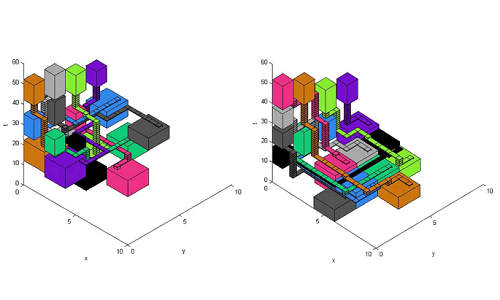When you get sick, your physician may take a sample of your blood, send it to the lab and wait for results. In the near future, however, doctors may be able to run those tests almost instantly on a piece of plastic about the size of credit card.
Photo Credits: IEEE Transactions on Nanobiosciences
These labs-on-a-chip would not only be quick—results are available in minutes—but also inexpensive and portable. They could be used miles from the nearest medical clinic to test for anything from HIV to diabetes. But as powerful as they may be, they could be far better, says Shiyan Hu, an associate professor of electrical and computer engineering at Michigan Technological University.
Generally, a lab-on-a-chip (LOC) can run no more than a test or two. That’s because the chips are designed manually, says Hu. If the LOC were made using computer-aided design, you could run dozens of tests with a single drop of blood.
“In a very short time, you could test for many conditions,” he said. “This really would be an entire lab on a chip.”
With PhD student Chen Liao, Hu has taken the first step. “We have developed software to design the hardware,” he said. Their work focuses on routing the droplet of blood or other fluid through each test on the chip efficiently while avoiding any chip contamination.
“It has taken us four years to do the software, but to manufacture the LOC would be inexpensive,” Hu said. “The materials are very cheap, and the results are more accurate than a conventional lab’s.”
Ultimately, Hu aims to fabricate their own biochip using their software.
Their work was featured on the cover of the March edition of IEEE Transactions on Nanobiosciences and described in the article “Physical-Level Synthesis for Digital Lab-On-a-Chip Considering Variation, Contamination, and Defect.”
Story Source:
The above story is based on materials provided by Michigan Technological University, Marcia Goodrich.





